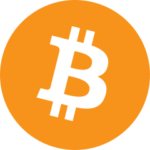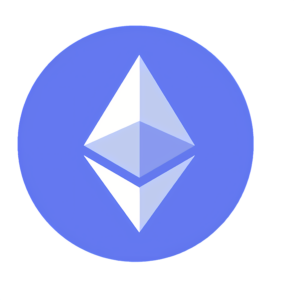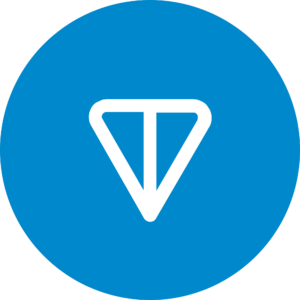Invest
Easy-to-understand analyses and guides that cover both core technologies and external influences, using relatable analogies and side-by-side comparisons to help you navigate crypto investing confidently.
Comparison of Major Layer-1 Blockchain Ecosystems
Explore the key differences and unique features of major Layer-1 blockchain ecosystems by market cap.

Specialized network, highly secure, decentralized, and widely recognized. Considered “digital gold.” Mainly used as a store of value and for peer-to-peer transactions.
Architecture
Proof-of-work consensus type, with monolithic architecture which handles the execution and settlement of transactions as well as the maintenance of consensus within a single layer. Highly secure and decentralized due to the extensive network of miners and nodes. Limited by block size and block time, leading to slower transactions and higher fees during congestion.
Tokenomics highlights
Governance model
Off-Chain Governance via Bitcoin Improvement Proposal (BIP) Process with Miner Consensus
Challenges
High transaction fees and scalability issues with slow transaction times as well as environmental cost due to proof-of-work

Digital platform that introduces smart contracts, which are like programs with specific procedures that, once deployed, no one can change. Acts as an infrastructure for most decentralized applications with a large developer community.
Architecture
Proof-of-work consensus in the beginning, Proof-of-stake since the Merge in 9/2022. Ethereum uses modular architecture which separate into distinct, specialized layers. Strong security and high level of decentralization with a large number of nodes and active developers. Scalability issues are solved through rollup chains which help lower fees significantly.
Tokenomics highlights
Governance model
A hybrid approach that incorporates both off-chain and on-chain elements, with off-chain governance including community discussions and Ethereum Improvement Proposals (EIPs), while on-chain governance involves stakeholder voting on the blockchain. Various stakeholders, from Ether holders to protocol developers, play roles in this process. EIPs are proposed, reviewed, and iterated upon before being implemented through network upgrades.
Challenges
Scalability of transactions causing high gas fees, ranging from a few dollars to over $100 during periods of high network congestion. Layer 2 solutions reduce fees by offloading transactions from the main chain, typically fractions of a cent, but cause fragmentation of liquidity and user experience.

Digital platform focused on extremely fast transactions and low fees, supported by robust architecture for handling thousands of transactions per second. Supports smart contracts and DApps with high throughput and low latency. High security with innovative mechanisms, but newer and less battle-tested and less decentralized than Bitcoin and Ethereum, with fewer nodes but still growing.
Architecture
Solana uses Proof of History as a tool in its Proof of Stake consensus. Proof of History avoids the need for every node to agree on each transaction’s order, leading to significantly faster transaction processing. Solana’s monolithic architecture handles the execution and settlement of transactions as well as the maintenance of consensus within a single layer.
Tokenomics highlights
Solana uses a unique inflation model to reward network validators and tokenholders, which provides supply predictability and supports long term economic stability. Transaction fees are participant-to-participant transfers that compensate network participants for including and executing a proposed transaction. A portion of each transaction fee is also partially burned to protect against forking and support long-term economic stability. Tokens are distributed through public allocation (sale or airdrop), ecosystem/treasury, investors, and the team. No capped max supply.
Governance model
Off-Chain Governance. The community can propose changes, but core developers and validators decide on their implementation. The Solana Foundation supports the ecosystem’s development and provides funding and strategic guidance. On-chain voting is possible through the feature program, however lacks functionality and visibility and has barely been used in practice.
Challenges
Solana has faced frequent network outages due to congestion from high transaction volumes. The high cost and technical requirements for running a validator node can lead to centralization

Architecture
Proof-of-stake consensus. Multi-blockchain system with a masterchain and multiple workchains facilitating parallel transaction processing across multiple chains. Asynchronous message delivery allows transactions to be processed independently and in parallel to improve scalability. Supports smart contracts with the ability to integrate seamlessly with messaging apps like Telegram. TON dapps are deployed directly in Telegram as per its “open platform” philosophy, creating a smooth UX with web3 features abstracted away.
Tokenomics highlights
Governance model
TON uses an on-chain governance model where decisions are facilitated by specialized smart contracts called Fate Channels and token-holder voting. The community can propose changes and vote on them, with token holders having a say in the network’s future direction.
Challenges
Past issues with the SEC create ongoing concerns about regulatory compliance and potential future legal challenges. The TON ecosystem currently has a relatively small number of developers compared to other ecosystems, facing significant challenge in boosting developer engagement due to the complexities of its programming languages, FunC and Fift.

Aiming to create an “Internet of Blockchains,” Cosmos allows developers to set up their own blockchain easily. The blockchains in Cosmos ecosystem are interoperable and interconnected.
Architecture
Tokenomics highlights
Governance model
Challenges

High-performance blockchain for scalable and low-latency dApps aiming to provide a scalable and developer-friendly platform for efficient dApp deployment
Architecture
Tokenomics highlights
Fixed total supply of 10 billion SUI tokens. A significant portion is allocated to the community, which include research and development and validator subsidies. Token is used for transaction fees, securing the network through staking, and participating in governance.
Governance model
Challenges
While Sui aims to provide high scalability, actual performance under heavy usage remains to be fully proven. Sui as an ecosystem also faces challenges in broader adoption, particularly due to the learning curve of its unique Move language.

A privacy-focused blockchain designed based on Bitcoin. It leverages advanced cryptographic techniques to enable shielded transactions, ensuring user confidentiality while maintaining a transparent and auditable blockchain.
Architecture
Tokenomics highlights
Governance model
Challenges

Architecture
NEAR’s native token, NEAR, is used for transactions fees, running validator nodes by staking NEAR, and governance. Launched with 1 billion tokens at genesis, NEAR has a fixed inflation rate of 5% per year.
Governance model
The NEAR ecosystem is adopting a stake-based governance model, where token holders can delegate their voting power to representatives, known as delegates, to make informed decisions on their behalf. The House of Stake introduces “Endorsed Delegates” to promote qualified representatives.
Challenges
Comparison of Notable Emerging Ecosystems

A Decentralized Storage Network (DSN) that connects people who have extra available computer disk space with those who need more computer storage. Designed to provide scalable, cost-effective, and permanent data storage, it introduces a unique economic model that ensures data remains available indefinitely with a one-time fee.
Architecture
Tokenomics highlights
Arweave doesn’t have an onchain governance model. Instead, the protocol lets anyone suggest improvements and earn rewards if the community adopts them. Developers create updates, offer them with new tokens, and users decide which changes are useful. This process keeps Arweave improving while ensuring fair rewards and minimal token inflation.
Challenges

A decentralized, open-source blockchain designed to create a marketplace where machine learning models contribute, share intelligence, and are rewarded based on their utility.
Architecture
Tokenomics Highlights
The TAO token incentivizes participants to contribute computational resources and intelligence. TAO is created via mining and validation, with rewards distributed equally between miners. TAO has a limited supply model. The tokenomics are structured to reward high-quality machine learning contributions while maintaining the network’s security.
Governance Model
Challenges

A modular blockchain network designed to enable scalable and secure decentralized applications. It separates consensus and data availability from the execution of transactions, allowing developers to deploy customized execution environments while leveraging Celestia’s consensus and data availability layers.
Architecture
Celestia separates consensus and data availability from transaction execution, allowing developers to deploy customized execution environments while relying on Celestia for consensus and data availability, allowing the network to handle a large number of transactions and data. It uses data availability sampling where nodes are not required to download the entire blockchain. Celestia’s architecture allows for different consensus algorithms to be plugged in, providing flexibility and adaptability to various use cases. As a Cosmos chain, Celestia uses Tendermint consensus.
Tokenomics highlights
The maximum supply is set at 1 billion TIA tokens, and the circulating supply will gradually increase over time. Allocated towards development, ecosystem incentives, the team, and early supporters. Token is used to pay for data availability, as a gas token and currency for new rollups, simplifying blockchain deployment, securing the network through staking, and governance.
Governance model
A hybrid model of on-chain and off-chain governance. TIA holders (not just stakers) can propose and vote on governance proposals.
Challenges
A specialized DA layer without an Execution layer doesn’t serve much purpose. Unlike other blockchain networks, Celestia will consequently rely on other Execution chains to kickstart user activity. Because Celestia doesn’t perform state execution, unlike most chains, its token’s utility as a liquidity source in DeFi and other areas may be limited.

Architecture
Tokenomics highlights
Fixed total supply of 100 million INJ tokens. Majority of tokens are allocated to long-term development and growth of the ecosystem. Token is used for transaction fees, governance, securing the network through staking, and various protocol functions like trading and market creation. A portion of transaction fees is burned, reducing the total supply over time and potentially increasing the value of remaining tokens.
Governance model
Operates under a DAO model, enabling decentralized governance through INJ token holders. Participants may receive rewards for their involvement in governance activities.
Challenges
Operating in the financial and derivatives space brings significant regulatory challenges that can impact growth and operations. Plus, competing with well-established DeFi platforms and attracting sufficient liquidity and user base is a constant challenge for Injective.

An open-source layer-1 blockchain that adheres to the same principles embedded in Bitcoin but with fast transactions and high scalability.
Architecture
Tokenomics highlights
With no pre-mine, pre-sales, or coin allocations, Kaspa is fully decentralized, open-source, and community-managed. Its maximum supply is 28.7 billion coins, with a halving emission schedule occurring yearly through smooth monthly reductions. KAS is used for transaction fees and miner rewards for securing the network.
Governance model
Currently, Kaspa operates without an official on-chain governance system, relying on open-source development and community contributions.
Challenges

A layer 1 blockchain that combines cryptography and artificial intelligence, directing computing resources involved in the mining process towards machine learning advancements.
Architecture
Tokenomics highlights
Qubic’s native token (QUs) is used as network’s computational energy for smart contract execution and other services. The token is also used for staking, governance, and as rewards for validators and miners. Transfers within the network are feeless, with QUs functioning as energy rather than currency—permanently burned upon use to offset inflationary minting. The token supply is capped at 200 trillion, with an emission schedule designed to support deflation.
Governance model
Qubic operates on an on-chain governance model, Qubic’s Quorum, which requires at least 451 votes from network validators (Computors) to pass any decision on the network. Each Computor has an equal vote. This mechanism encourages active participation from Computors to maintain a decentralized and secure network.
Challenges

A sector-specific Layer 1 blockchain focused on optimizing the trading infrastructure for decentralized exchanges (DEXs) and DeFi applications. Built on the Cosmos SDK, Sei aims to provide high throughput, low-latency, and secure trading experiences by offering a specialized environment tailored for trading applications.
Architecture
Tokenomics highlights
Fixed total supply of 1 billion SEI tokens. Tokens are allocated to community and ecosystem incentives, the development team, advisors, and investors. Token is used for transaction and trading fees, as native asset liquidity or collateral to applications built on the Sei blockchain.securing the network through staking, and governance.
Governance model
On-chain governance where members vote with their staked Sei. One staked Sei equals one vote. If a user fails to specify a vote, their vote defaults to the validator they are staked to. Validators vote with their entire stake unless specified by delegators.
Challenges
The on-chain ecosystem, overall applications, and TVL are in the early stages, lacking standout DeFi applications. Managing fast finality in various conditions and with changing number of nodes as the network matures will be a future challenge for Sei. Handling transactions in parallel presents inherent complexities due to the nature of blockchains, especially in situations where multiple nodes share states which can lead to disparities in parallel processing.

Sonic is a Layer 1 EVM blockchain evolved from Fantom, focusing on providing high performance and scalability for decentralized applications, capable of processing 10,000 transactions per second.
Architecture
Sonic utilizes a Proof-of-Stake (PoS), DAG-based, Asynchronous Byzantine Fault Tolerant (aBFT) consensus mechanism to achieve high-speed and efficient transaction finality. Unlike traditional blockchains, Sonic’s DAG structure allows validators to asynchronously confirm transactions without waiting for sequential block production,allowing transactions to be finalized within 1-2 seconds. Sonic’s consensus mechanism is an evolution of Fantom’s Lachesis protocol.
Tokenomics highlights
The native $S token is used for transaction fees, staking, governance, and validator operations, with an initial supply of 3.175 billion tokens. A 1:1 migration from FTM to $S occurs after the network transition. Additional tokens are minted for airdrops (6%) and ongoing funding (1.5% annually for six years), with unused tokens burned to prevent inflation. Block rewards from Fantom Opera are migrated for the first four years, after which new $S tokens are minted at a 1.75% annual rate. Validators earn rewards from both block rewards and network fees, while burn mechanisms help reduce supply.
Governance model
Challenges
Sonic has relatively few validator nodes compared to other mature public chains, which affects its TVL. Sonic’s success depends heavily on the adoption of its platform by developers and users. The presence of stronger competitors or more widely adopted ecosystems may hinder its growth and adoption.
